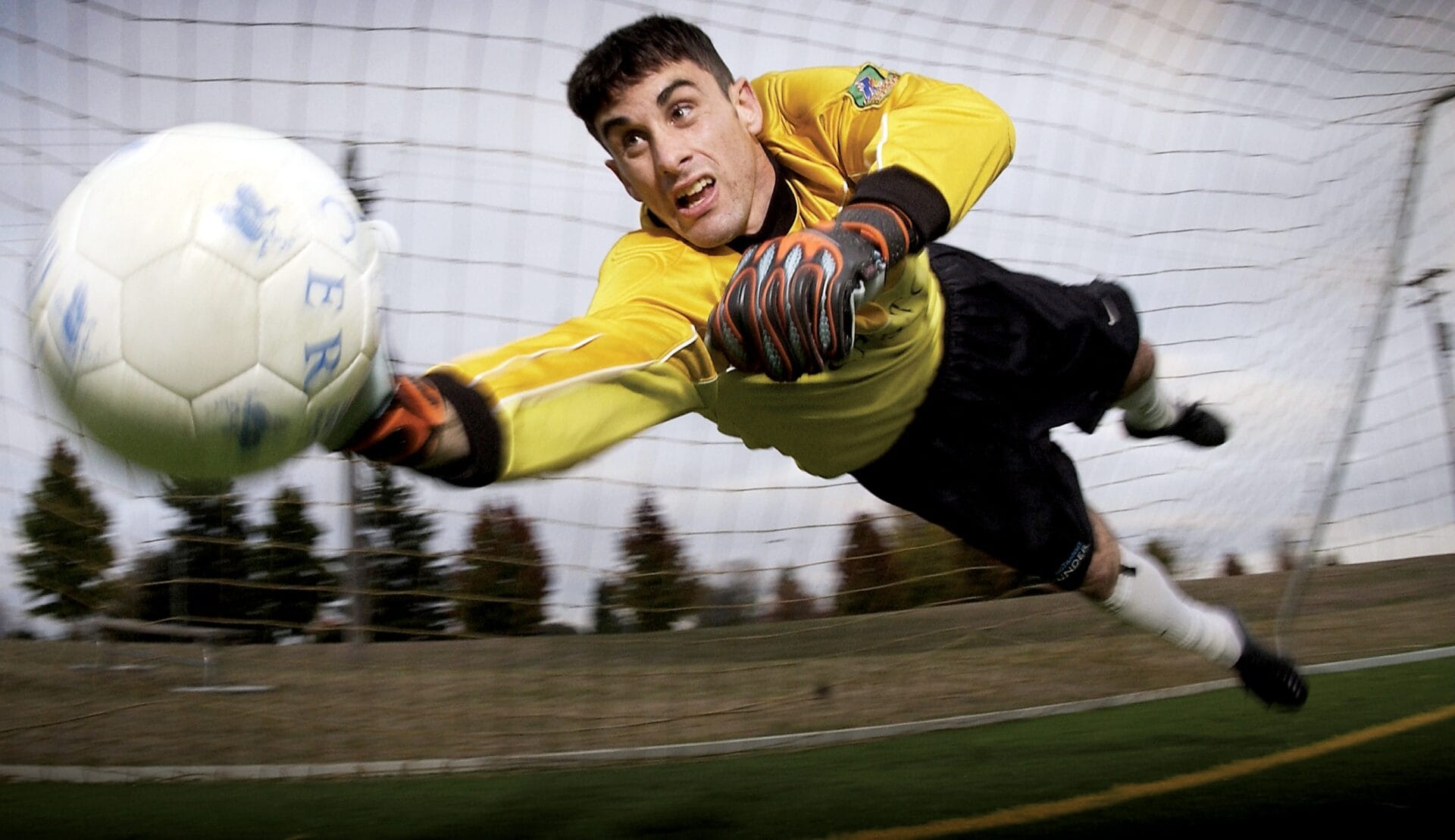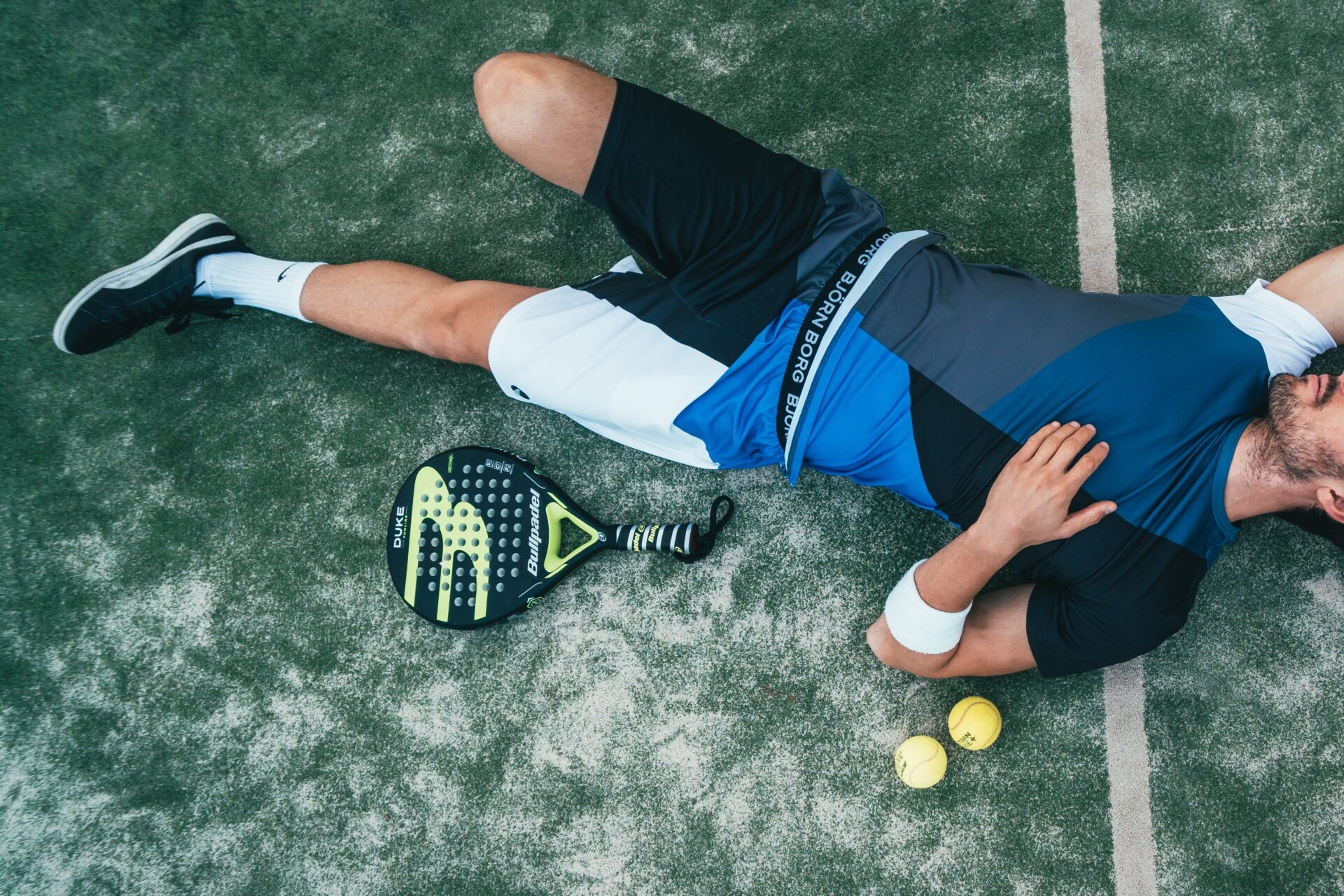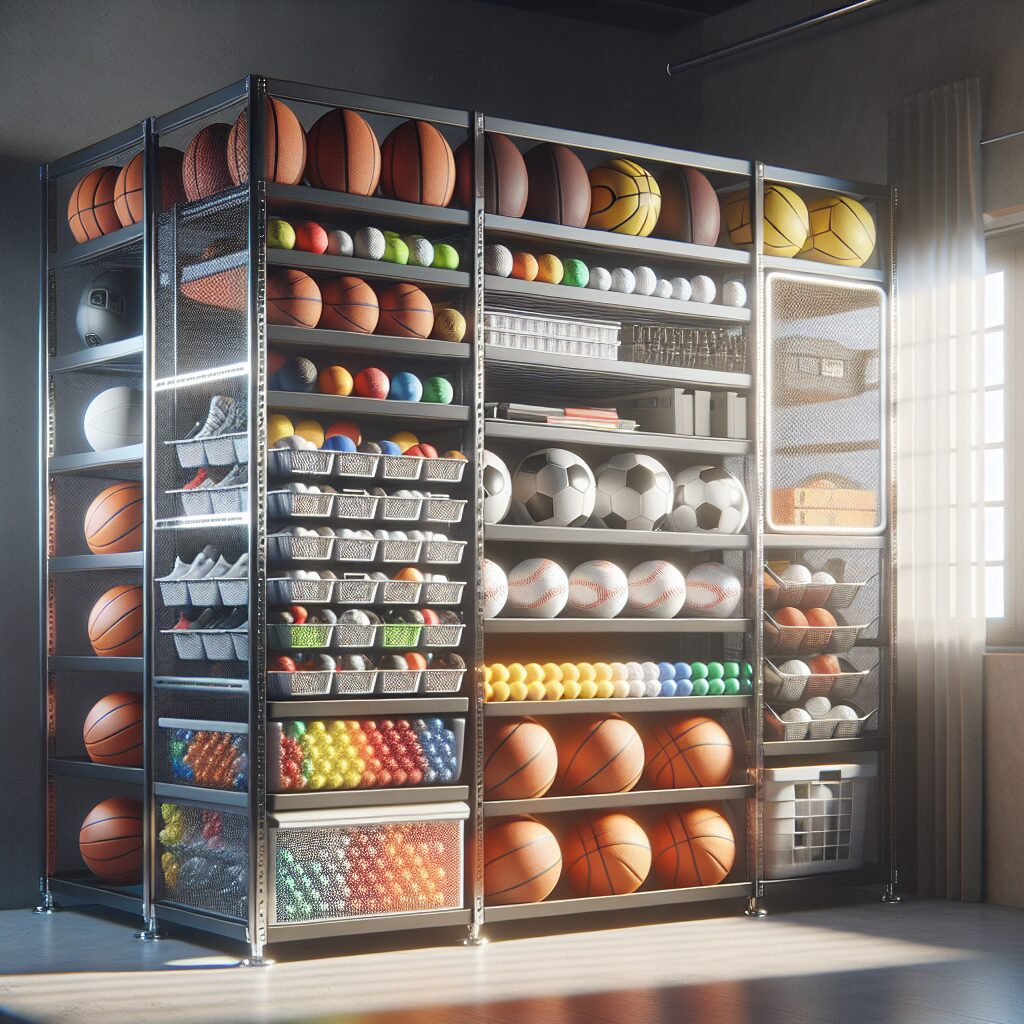Soccer is a sport beloved by people of all ages around the world. While there are different types of balls used for various age groups and skill levels, knowing what size soccer ball to use for adults is important to ensure that you get the most out of your game. This guide will provide an overview of the size soccer ball suitable for adult players, as well as other factors to consider when making your purchase.The best size soccer ball for adults is a size 5 ball. Size 5 soccer balls are the official size and weight for adult male competition, and are used in all FIFA-sanctioned tournaments.
Standard Size of a Soccer Ball for Adults
Soccer is one of the most popular sports in the world, and the size of the soccer ball used for play is an important consideration. The standard size of a soccer ball for adults is typically a size 5. This size is convenient for players over the age of 12, as it provides a balance between being too large and too small. The circumference of a size 5 soccer ball is 68-70 cm, and its weight should be between 410 and 450 grams.
The size 5 soccer ball is used for all levels of play, including professional leagues, international tournaments, and amateur matches. It has been designed to provide optimal performance in terms of aerodynamics and distance control while still being easy to handle.
It is important to note that there are alternative sizes available for younger players or those who prefer a smaller size. A mini-soccer ball (size 1) or youth-sized balls (sizes 3 or 4) may be more suitable for children or those who are just starting out with the game.
In addition to standard-sized balls, there are also special balls designed specifically for different types of play such as beach soccer, futsal, and indoor or street soccer. These variations in design can provide improved control over the ball or enhanced durability depending on the type of surface on which they are being used.
Overall, it’s important to consider both your skill level and preferences when selecting a soccer ball size. The standard size 5 should suit most players, but if you feel like you need something bigger or smaller then there are plenty of alternatives available.
Adult Soccer Ball Sizes and Their Uses
Soccer is one of the most popular sports in the world, and it’s played with a variety of ball sizes to suit different age groups and skill levels. The size of the soccer ball used by adults is typically between a Size 5 and a Size 4, with each size offering different benefits for players. Here’s a look at the different adult soccer ball sizes and their uses.
Size 5 Soccer Balls are considered full-size balls and are used for adult competition. These balls are bigger than the other sizes, making them ideal for adult players who need more control over their ball due to larger hands or longer legs. The heavier weight of these balls also helps in improving the power of shots and passes.
Size 4 Soccer Balls are slightly smaller than Size 5 balls, making them suitable for younger adults who may not have as much strength or control as older players. They can also be used by recreational teams and those looking for a slightly smaller ball with improved accuracy.
Size 3 Soccer Balls are even smaller than Size 4 balls, making them suitable for youth players aged 8-12 years old who may need more control on their shots due to smaller hands or legs. These balls can also be used by recreational teams that require a lighter ball with more accuracy when passing or shooting.
No matter what size soccer ball you’re using, proper care should always be taken to ensure they last longer and perform better during matches. Regularly check your soccer ball for any signs of wear, such as ripped seams or worn patches, and replace it if necessary. Proper care will help ensure your soccer ball will last longer so you can enjoy playing this great sport even more!
Regulation Soccer Ball Size for Professional Matches
The regulation soccer ball size for professional matches is a key factor in the game. The size of the ball must be between 68 cm and 70 cm in circumference, and it must weigh between 410 g and 450 g. The ball must also be made of leather or other suitable material, and should have a pressure of 0.6 – 1.1 atmospheres (atmospheric pressure at sea level) at the time of manufacture. The ball should also be made to a specific shape, which allows for good aerodynamics.
The International Football Association Board (IFAB) sets out guidelines to ensure that all balls used in professional matches comply with these regulations. In addition, FIFA has set out specific rules for the official match ball for each of its competitions, such as the FIFA World Cup and FIFA Women’s World Cup.
The regulation soccer ball size is a key element in ensuring fairness and safety during competitive matches. For example, a larger ball would likely move faster than a smaller one, thus giving an unfair advantage to one team over another. Similarly, if the weight is too light or too heavy then it can affect how the players control and move the ball around the field, which can again lead to an unfair advantage to one team over another.
In order to ensure that all balls used during competitive matches are compliant with these regulations, FIFA regularly tests match balls prior to their use in official tournaments or league matches. This helps ensure that all players are provided with consistent quality balls throughout each match they play.
Overall, regulation soccer ball size plays an important role in maintaining fairness and safety during professional matches. By ensuring that all match balls meet these requirements set out by IFAB and FIFA, players can be assured that they are playing on an even playing field throughout each game they take part in.
Size of Soccer Ball
Choosing the right size of soccer ball for adults is important in ensuring that players can perform to their best ability while on the field. There are several factors to consider when selecting the appropriate size, such as the player’s age, skill level, and playing surface. It is also important to think about the size of the goalposts and whether or not a smaller ball might be more suited for a particular game.
When selecting a ball for adults, it is important to consider the age and skill level of the players. Size 5 soccer balls are generally used by adult males and are considered standard for most professional leagues. Size 4 balls are typically used by adult females or younger players who may not have as much experience or strength. Size 3 balls are usually reserved for junior players and are typically smaller than regular-sized balls.
The type of playing surface should also be taken into consideration when choosing a soccer ball size. Harder surfaces may require a heavier ball in order to maintain consistent bounce and speed while playing on grass pitches may require a lighter ball with more air pressure to ensure it travels further distances without losing its shape or trajectory.
It is also essential to think about the size of the goalposts when selecting a soccer ball for adults. Smaller goals may require smaller balls in order to reduce the risk of overshooting or missing shots entirely due to an inability to fit through the posts with ease.
Finally, it is important to consider what type of game each player will be participating in when selecting an appropriate size soccer ball for adults. Different sizes may be better suited for different types of games such as five-a-side, seven-a-side, or full 11-a-side matches. Taking all these factors into account will help ensure that players have access to equipment that allows them to perform at their best while on the field.
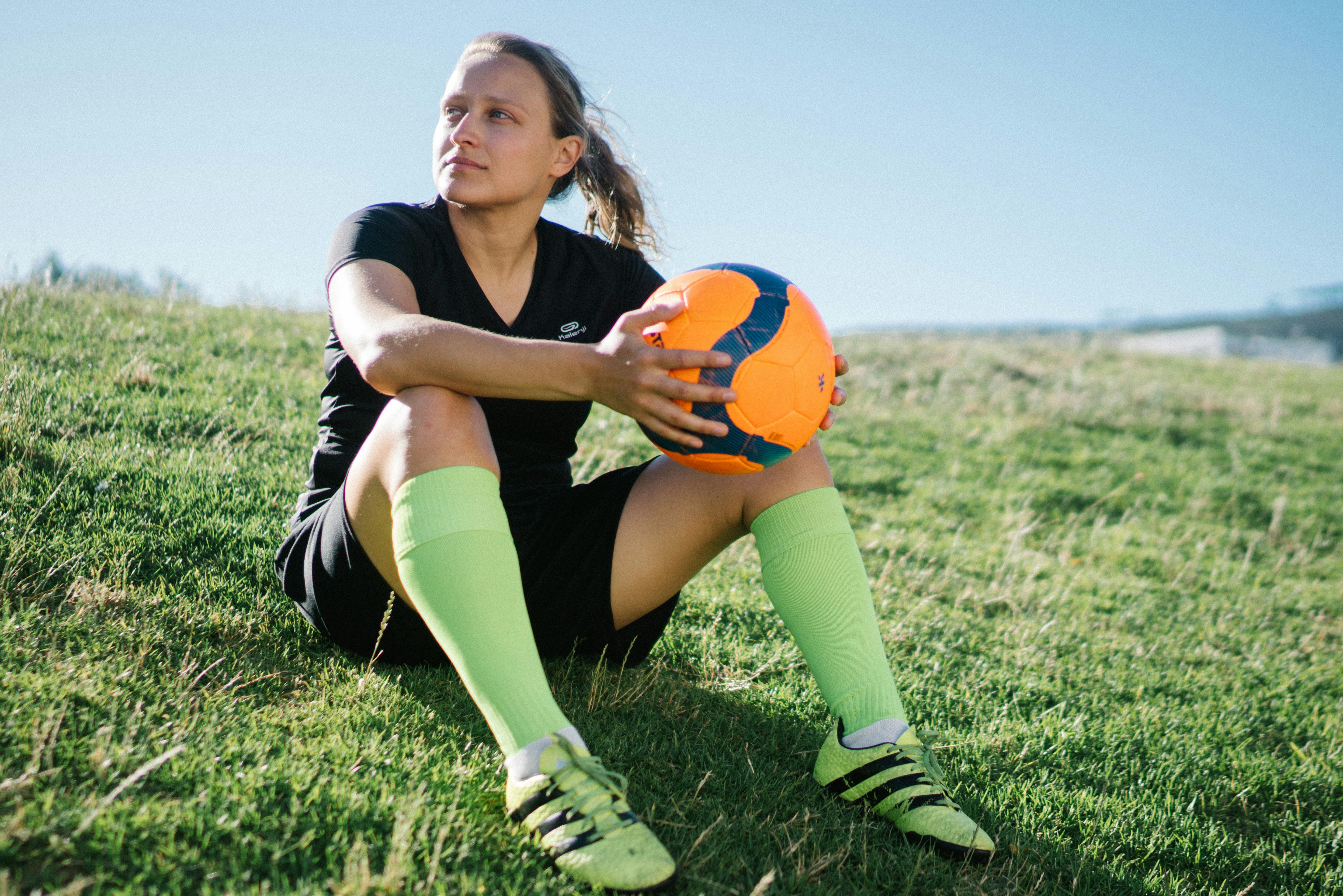
Different Types of Adult Soccer Balls and Their Sizes
Adult soccer balls come in different sizes and types, including professional match balls, training balls, and small-sided balls. Professional match balls are designed for advanced players who compete in leagues and tournaments, while training balls are designed for recreational players or those who practice on their own. Small-sided soccer balls are designed specifically for small-sided games such as five-or six-a-side soccer.
The size of an adult soccer ball is typically measured in circumference – the distance around the ball – rather than its diameter. The standard size of a professional match ball is 22 inches (55 cm). Training balls come in a variety of sizes, ranging from 19 to 24 inches (48 to 61 cm). Small-sided soccer balls are usually 16 to 18 inches (41 to 46 cm) in circumference.
The weight of an adult soccer ball is also important. Professional match balls weigh between 14 and 16 ounces (400 to 450 grams). Training balls typically weigh between 12 and 13 ounces (350 to 375 grams), while small-sided soccer balls usually weigh between 10 and 11 ounces (280 to 310 grams).
The material used to make an adult soccer ball can also affect its size and weight. Professional matchballs are usually made of leather or synthetic leather, while training balls may be made of rubber or polyurethane foam. Small-sided soccer balls may be made of rubber or foam with a textured surface for better control.
Finally, the inflation pressure of an adult soccer ball can also affect its size and weight. Professional matchballs are typically inflated with a pressure gauge at 8 psi (0.55 bar), while training and small-sided soccer balls should be inflated at 6 psi (0.4 bar). Inflating the ball too much can cause it to become too hard, while inflating it too little can cause it to become too soft.
Choosing the Right Size Soccer Ball
Choosing the right size soccer ball is an important part of playing soccer. The size of the ball affects how you kick, dribble, and pass. There are several different sizes of soccer balls available, and it is important to select the size that best suits your needs. Understanding the various sizes and their benefits can help you make an informed decision when selecting a soccer ball.
The most common size of soccer ball is a size 5. This is the official match ball for all FIFA matches and international competitions. It is also suitable for recreational play, as it provides good control and accuracy when kicking or passing. A size 5 ball is usually 26-27 inches in circumference, with a weight of 14-16 ounces.
For younger players or those just starting out with soccer, a smaller size 4 ball may be more appropriate. This size offers improved control over a larger sized ball, making it easier to learn how to pass and dribble effectively. A size 4 ball typically measures 25-26 inches in circumference, with a weight of 12-13 ounces.
For those who are looking for an even smaller option, there is also a mini-soccer ball available in sizes 1-3. These balls are typically used for training purposes or by young children who are just starting to learn how to play soccer. They offer improved control over larger balls due to their lighter weight and smaller circumference (usually 18-20 inches).
No matter what your skill level or age group, there is sure to be a soccer ball that fits your needs perfectly! It’s important to consider all factors when selecting the correct size of soccer ball for you or your team – from age group and skill level, to personal preference and playing surface type – so that you can get the most out of every game!
Making Sure You Choose the Right Size of Soccer Ball
Choosing the right size of soccer ball can be a tricky process for parents and kids alike. The size of the ball will depend on a variety of factors, including the age and size of the player, the type of game being played, and even the playing surface. To make sure you purchase a ball that is appropriate for your child’s level of play, it is important to understand the different sizes that are available.
The first thing to consider when selecting a soccer ball is its size. Most soccer balls come in three different sizes: 3, 4, and 5. Size 3 soccer balls are generally recommended for children between 8-12 years old who are just beginning to play soccer. These balls are smaller in size and have less bounce than their larger counterparts.
Size 4 soccer balls are designed for players aged 12 and up. These balls are slightly larger than their size 3 counterparts and provide more bounce than a size 3 ball would. This makes them perfect for those who have already established some basic skills but aren’t quite ready to move up to a full-size soccer ball yet.
Finally, size 5 soccer balls are designed for those aged 14 or older with advanced skills. These larger balls offer more bounce than their smaller counterparts, making them ideal for competitive play at the high school or college level.
Once you’ve determined which size is best suited for your child’s skill level, you’ll also want to consider what type of surface they will be playing on most frequently. If they will be playing on grass or artificial turf surfaces, then a more durable synthetic leather material may be necessary. On the other hand, if they will be playing on hard surfaces like concrete or asphalt, then a softer rubber material may be preferable as it provides better grip when kicking or dribbling the ball.
Finally, when selecting a soccer ball it’s important to think about what kind of game your child will be playing most often; match games or recreational games? Match games have stricter regulations regarding ball sizes and materials so it’s important to choose one that meets these standards if your child plans on participating in competitive match play regularly.
Overall there is no single “right” answer when it comes to choosing the right size of soccer ball; instead it all comes down to personal preference and individual needs based on age and skill level as well as surface type and style of play.
It is important to remember that while choosing a bigger sized soccer ball may seem like an advantage initially; if your child is not mature enough in their skillset yet it could end up becoming an obstacle rather than an advantage! So take some time when selecting which type and size would work best for your child’s individual needs – their success depends on it!
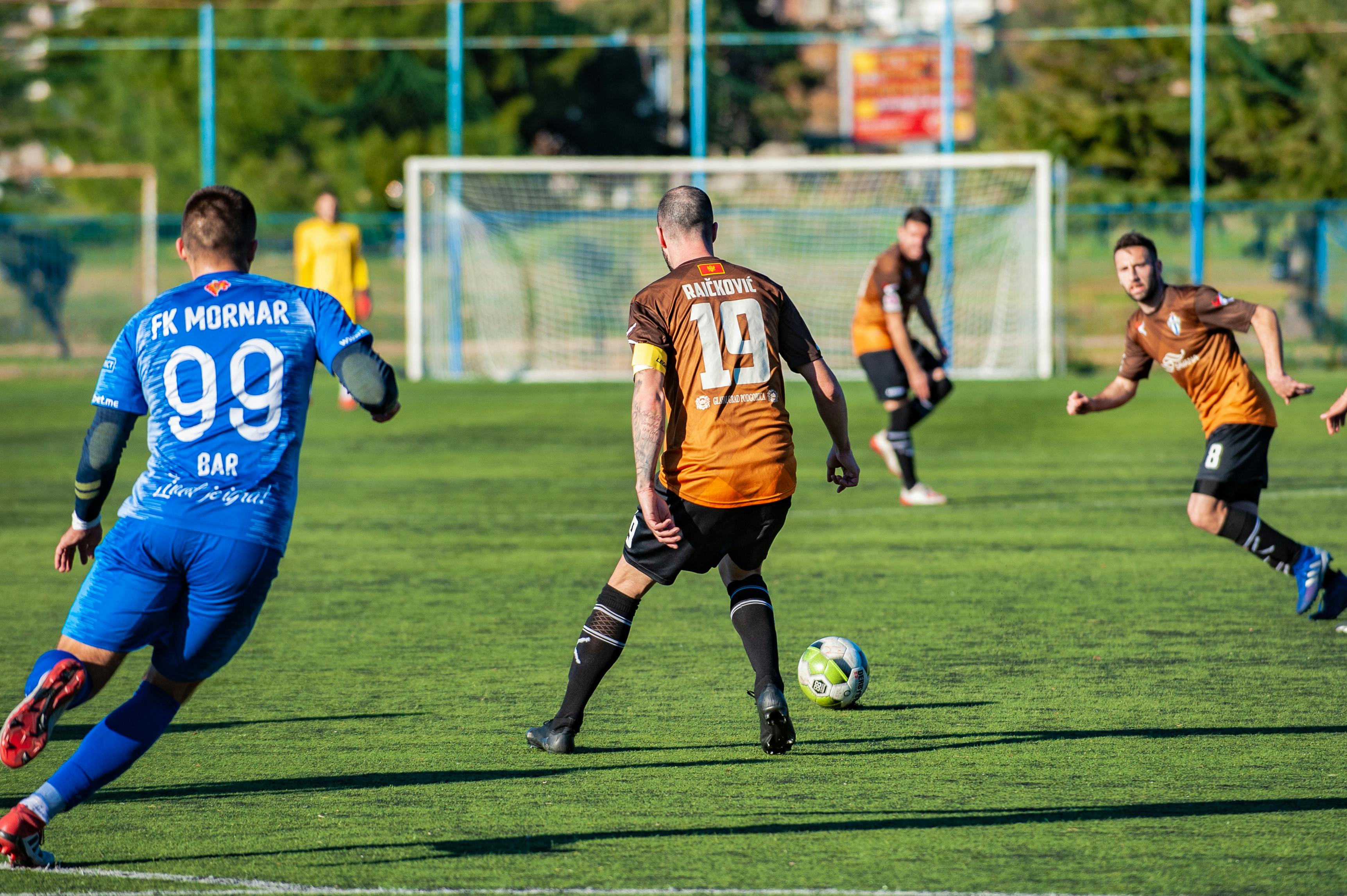
Conclusion
In conclusion, the size of a soccer ball for adults should be determined by their age, gender, and playing level. Men’s soccer balls are typically size 5, while women’s soccer balls are usually size 4. Size 3 is generally used by children and youth players. Experienced players may opt for a slightly larger ball to improve their skills. Ultimately, selecting the right size soccer ball depends on an individual’s preference and playing style.
No matter what size soccer ball you choose, it is important to ensure that it is properly inflated and stored in a safe environment. Taking proper care of your ball will help to extend its lifespan and improve your game performance.
Whether you’re a beginner or an experienced player, choosing the right size soccer ball can help you improve your game and enhance your overall enjoyment of the sport.

